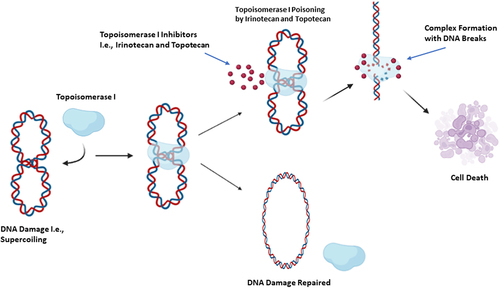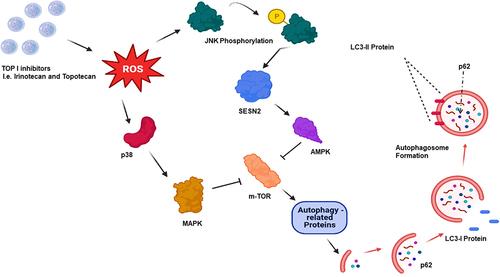Figures & data
Figure 1. The mechanism of action of topoisomerase I inhibitors. Irinotecan and topotecan exert their antitumor effects via covalent binding with topoisomerase I, resulting in Top I- Irinotecan/Topotecan-DNA complex formation. This complex generates single and double-strand breaks in DNA, leading to cell death.

Figure 2. Top I inhibition triggers autophagy via m-TOR suppression. Topoisomerase I inhibition by irinotecan or topotecan generates reactive oxygen species (ROS), which drives the activation of JNK/AMP and p38/MAPK. JNK phosphorylation activates SESN2, followed by AMPK. p38 activation via ROS upregulates MAPK. These two pathways converge on m-TOR, where m-TOR inhibition triggers autophagic flux.

Table 1. Various functions of autophagy in response to the clinically used topoisomerase I inhibitors.

